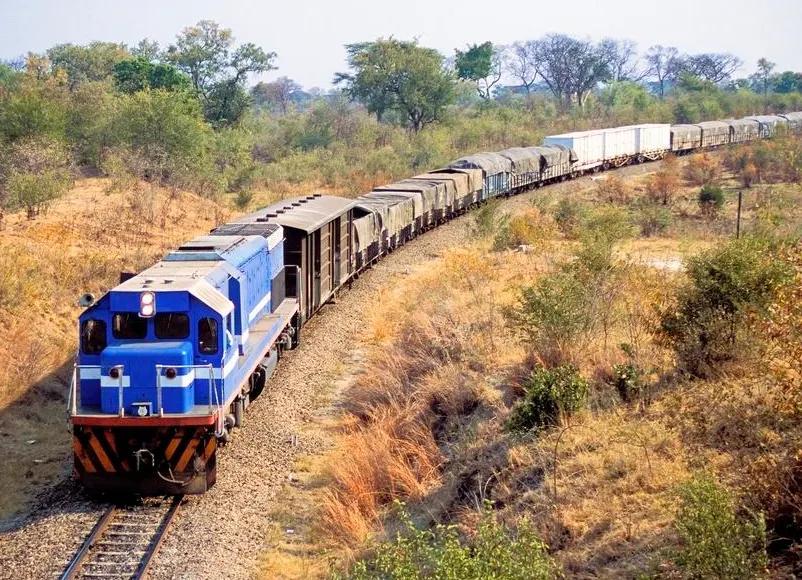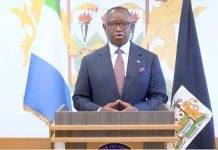Harry G. Broadman
Africa-Press – Sierra-Leone. The debate about establishment of the Africa Continental Free Trade Agreement (AfCFTA) unveiled in 2019 has focused on a core—and for now—the most visible elements of the agreement: African governments’ commitments to reduce trade policy barriers—mostly import tariffs—on goods traded between the 54 countries on the continent.
There’s little question that Africa’s liberalization of these key portions of its backbone trade policies will provide a powerful economic shot in the arm to enhance the continent’s prowess in world trade and, more importantly, boost Africa’s intra-continental trade, the low level of which is a global anomaly.
Unfortunately, less attention has been paid by Africa’s leaders to the reform of two equally important corollary measures to establish modern continent-wide institutions and administrative rules: (i) those that facilitate or otherwise enhance consistency of regulatory protocols governing cross-border commerce—an “African Transcontinental Trade Facilitation Fund” to enable uniformity and implementation of licensing protocols, and (ii) those that cushion the impacts from closure or relocation of African firms as well as the layoff, retraining or relocation of workers—an “African Transcontinental Trade Adjustment Assistance Fund.” The need for both funds is an inevitable byproduct from the need to enhance inter-country trade—whether within Africa or between African countries and elsewhere around the globe.
Realizing The AfCFTA’s Ambitions
African policymakers have long sought mechanisms to increase their countries’ flows of cross-border trade as a means to integrate the region into the world economy, as a pathway to sustained growth and to make a permanent dent in poverty. The AfCFTA was established based on achieving this objective.
While the basic principle underlying the implementation of such an agenda in Africa, as in many other emerging markets, is the same as in advanced countries, by definition, there is a far greater payoff and urgency to do so in the former than the latter by dint of their economic standing in global markets.
At the same time, while the ability of both sets of countries to realize the economic benefits from reducing barriers to trade is conditioned on the extent to which there are robust national policies and institutions to ease economies’ adjustments as a result of modifications in trade policy, both the scale and nature of such programs required will differ considerably between Africa and other emerging markets and the globe’s advanced countries.
After all, levels of income, quality of infrastructure, and robustness of other supportive institutions and their funding vary markedly in these two worlds.
Much of the discussion about the AfCFTA has glossed over these differences. Changes in trade regimes—and their outcomes—that work in advanced, wealthy countries often face difficulty in emerging markets, especially ones where poverty is a key characteristic. Poor countries embarking on ambitious trade reforms face twin challenges: (i) how changes in trade flows—in either direction—can be channeled so as to alleviate (and certainly not exacerbate) poverty (ii) how to fashion poverty-alleviation policies that are mutually reinforcing with enhancing trade.
In economist-speak, while pursuit of trade reform in wealthy advanced countries largely focuses on the “initial conditions” of seeking remedies to improve trade policy, for much of Africa and other emerging markets, the challenge is to deal simultaneously with two “initial conditions,” remediating poverty and enhancing trade flows. To date, much of the design of the implementing regime for the AfCFTA mirrors more that of advanced countries than markets where poverty is a prominent feature.
The African Challenges The AfCFTA Must Address
The central trade policy challenge for Africa stems from the fact that it is a highly fragmented continent comprised of numerous small countries, many of which are landlocked. As a result, growth of African trade with the rest of the globe has been elusive owing to the fact that flows of intra-African cross-border trade remain anomalously small, at less than 20 percent. By comparison, intra-continental trade in Asia is about 60 percent and intra-European trade is close to 70 percent.
There are several policy constraints on cross-border trade on the African continent. Many—but not all of them—can be alleviated as they have been done in the rest of world through free-trade agreements.
Hence the AfCFTA. As of January 2024, the AfCFTA Council of Ministers, which is currently chaired by Tanzania, held its 13th meeting in Durban, South Africa.
Of course, while there is inter-country competition among African firms across the continent today, as trade barriers are lowered under the AfCFTA that competition will become more intensified.
As we all witness within other countries around the world, as trade-policy induced competition becomes greater, some firms will grow larger, and others will diminish or even exit the market. Such changes have obvious impacts on workers: firms facing more difficulty may well lay off employees, while those businesses that grow larger may hire more workers.
If it were the case that the employees laid off were quickly re-trained as well as able to find work in the firms that are expanding that would be ideal. But the world over that is unlikely to be so.
The issue becomes one of how does public policy assist in that adjustment—whether through providing funds for worker re-training, covering expenses for re-location to where there are greater job opportunities, or both. The rationale for such programs to be financed by government is straightforward: after all society writ large benefits by fostering growth of the overall economy.
To be sure, a number of advanced developed countries have such trade adjustment assistance programs. But their efficacy varies widely. Indeed, while the U.S. does a remarkably poor job on this score. Countries in the EU are far more effective.
The challenge is even more formidable in Africa and other emerging markets: not only are public resources constrained for such financing schemes, but the workers tend to be poorer and may well live in poverty. This calls for an even more robust trade adjustment assistance program than what is commonly found in developed markets.
The AfCFTA’s Goals and Constraints
The AfCFTA is certainly an unprecedented initiative to generate vast economies of scale on an intra-continental basis, principally by eliminating 90 per cent of tariffs on goods and significantly reducing non-tariff barriers (NTBs) on merchandise and services, such as differences in licensing regimes and regulatory standards. It aims to integrate the entire region into a unified market that could embody a combined GDP of $2.5tn and a population of over 1bn, 60 per cent of whom are below the age of 25.
To say the AfCFTA is a heroic undertaking would be an understatement. At the same time, it is hard to argue with its intent and goals. The IMF estimates that the AfCFTA will produce an increase in economic welfare for the continent as a whole of between 2 and 4 per cent, depending on how extensively and quickly its reforms are implemented. Those are hardly inconsequential gains — if they can be realized.
It is clear that the AfCFTA’s success will depend on the extent to which it incorporates from the outset a robust, sufficiently financed and continent-wide integrated program to alleviate the significant transitions and dislocations among firms and workers that trade liberalization policies induce everywhere around the globe, while also facilitating the entry of new businesses and members of the workforce.
Perhaps surprisingly, if Africa’s leaders look to the advanced countries to model such a program, they will fail. In advanced economies, adjustment mechanisms are generally ill designed. They are often enshrined in policies external to trade agreements and are cynically, but sometimes accurately, viewed as an afterthought.
Moreover, the size and duration of financing for such assistance is the responsibility of each signatory, rather than a collective enterprise among all jurisdictions involved in a trade agreement.
Indeed, the ineffectiveness of the standalone US Trade Adjustment Assistance program in ameliorating the effects within the US of the North American Free Trade Agreement (NAFTA)—now the US Mexico Canada Trade Agreement (USMCA)—is one example of such problems.
Whereas a wealthy country like the US has wriggle room to rectify such design flaws, in Africa, home to half of the world’s extreme poor, the stakes for easing into a regime of trade liberalization, especially one as ambitious as the AfCFTA, are a great deal higher.
Thankfully, social safety nets in Africa have greatly enlarged over the past decade and a half (albeit, of course, from a low base). However, there is appreciable variance in their scale across countries. Few are designed or nearly large enough to deal with existing unemployment and underemployment, weather-related calamities or external macroeconomic turbulence such as a global downturn in commodity prices, let alone the additional socio-economic impacts of significant trade liberalization.
How Might An AfCFTA Trade Adjustment Assistance Fund Be Organized?
Structuring, arranging the financing for, and implementing a continent-wide social safety net able to meet these needs must be an immediate priority for Africa’s leaders before the execution of the AfCFTA.
It is hard to overstate the magnitude of meeting such a challenge. This is not only because Africa is generally comprised of low-income countries, but also because the elimination of tariffs under the AfCFTA will necessarily reduce African governments’ fiscal resources. All other things equal, this means there will be diminished public funds available for trade adjustment assistance. UNCTAD has estimated that this reduction will be more than $4bn annually continent-wide.
Needless to say, truly innovative approaches to meet such financing needs are called for, beyond the routine method of securing loans from multilateral financial institutions.
One such approach might be the formation of a continental public-private partnership, in which African businesses that will profit from the expansion of trade under the AfCFTA would be major financiers.
The Need for Trade Facilitation
There is an equally critical issue that must be confronted by the continent’s leadership before the AfCFTA becomes effective. Unlike other regions’ pursuit of regional integration, Africa’s existing pattern of trade suffers from a pernicious structural problem: less than one-fifth of the average African country’s exports are bought by customers located in other African states. Put differently, more than 85 per cent of exports from African economies are sold outside the continent. Africa’s pattern of low intraregional trade is almost the opposite of what occurs in most other parts of the world.
This anomalous condition stems largely from the fact that not only are the vast majority of African businesses locally based small and medium-sized enterprises, but also that there is a daunting lack of cost-effective infrastructure to get goods and services to market at competitive rates. Indeed, there are instances where, because of variation in railway gauges across some African countries, it is necessary to offload shipments at a border and put them either on different rail cars or on trucks to get them to their final destination. The cost of shipping a product from, say, Johannesburg to Kigali can be a multiple of that of shipping the same good from Johannesburg to Beijing.
The consensus of projections of the effects of the AfCFTA is that once fully implemented it could increase intra-African trade of goods and services by as much as a third, with most of the near-term growth in trade taking place in manufacturing. Indeed, Africa’s manufacturing sector is thought to be able to double in size and create 13m to 16m new jobs under the AfCFTA. This would help shift the composition of Africa’s exports to the rest of the world away from undue dependence on raw commodities.
Nevertheless, for such gains to be realized, the longstanding and well-known continent-wide infrastructure gap, which exists not only within but also across Africa’s countries, must be addressed. Closing this gap is arguably the largest public good for which the requisite financing needs to be incorporated within AfCFTA from day one. It is the other critical area where a continental public-private partnership should be sought by Africa’s leaders without delay.
Jeopardizing Africa’s Focus on Enhancing Multilateral Intra-African Trade
US and Kenya have been in talks to develop a new strategic trade and investment partnership between the two countries, which could pave the way for the US’ first bilateral free trade agreement (FTA) in sub-Saharan Africa.
It is perfectly understandable why the US wants to expand commerce with its largest trade partner in East Africa. Indeed, Kenya has long been a major beneficiary of the African Growth and Opportunity Act (AGOA). In 2023, the country exported $685m of goods to the US, with 75% of these being exempted from American import duties under AGOA provisions. Leading exports include apparel, macadamia nuts, coffee, tea and titanium ores.
But Washington would do well to put proposing new bilateral FTAs between African states and the U.S. on the backburner for now—at least until the AfCFTA gets up and running.
Why? Because that agreement is the most pressing item on the continent’s agenda for boosting its international trade flows—indeed its economic growth. Compared to other regions of the world, Africa is currently resource-constrained by the amount of policy experts, industry executives and other practitioners sufficiently well-versed in negotiating, implementing and enforcing trade regimes.
The priority for the US to enhance its trade with African states should be to shift back to a multilateral track by supporting and providing technical assisting and training for Africans on trade policy in order to enhance the chances of success of the AfCFTA.
When key trading powers in the world economy such as the U.S. start picking off bilateral FTAs with countries as important as Kenya, that only serves to deflate the balloon for the AfCFTA—which is the single most important economic policy investment objective that the US should champion for Africa.
If Washington doesn’t pivot to put its energy into helping Africa launch the AfCFTA, the U.S.—and the rest of the world—will be left with a large continent comprised of small landlocked states without economies of scale, which will choke off opportunities for overseas investment there.
Moving Forward
Much is at stake for a successful AfCFTA. If there ever was an economic growth opportunity for the African continent to act in unison, as well as to show other parts of the world how to design integrated trade reform, this is it.
For More News And Analysis About Sierra-Leone Follow Africa-Press






